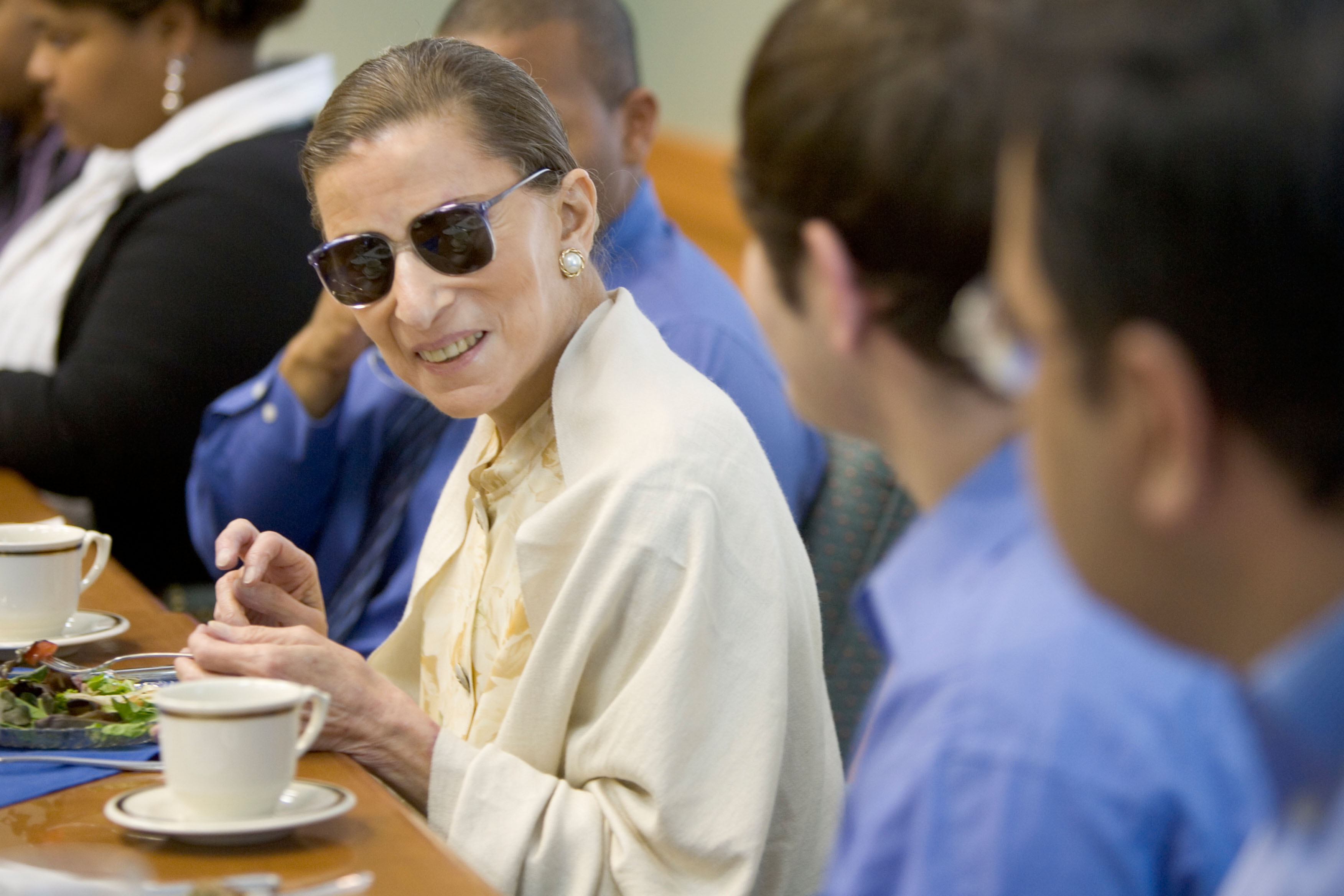Supreme Court Justices, of all the prominent federal officials, have long been shielded from the celebrity that can accompany successful political careers. Justice Ruth Bader Ginsburg, however, is inverting this paradigm; recent years have seen her develop into something of a cultural icon. A biography about her, written by the founders of famous Tumblr account Notorious RBG, recently took the seventh spot on the New York Times hardcover nonfiction bestseller list. Ginsburg’s followers sport her face on tee shirts, nail art and even tattoos. While she is neither the first nor the only woman on the Supreme Court, Ginsburg is its most prominent feminist icon to date. Several thinkpieces have already been written about why the Justice resonates so deeply with women. The consensus seems to be that much of what excites and inspires young feminists about Ginsburg is how she has managed to rise to power as a woman without apology in society where women are socialized to apologize for taking up space. Who better to counter societal pressures for women to diminish themselves than a woman famous for saying “no”?
Some portrayals of Ginsburg exaggerate her aggressive attitude; in fact, the Justice makes a point of knowing when to hold her tongue and how to appease her opposition. Art, for example, that depicts her holding two middle fingers up implies that she is aggressively unconcerned with being polite. Ironically enough, throughout her life the justice has been careful to avoid confrontational attitudes, preferring to pick her battles and voice her opinions in a way that will resonate with people who may not necessarily agree with her at first. While she is famous for writing passionate dissents like in Bush v. Gore or her oral dissent in 2013’s Shelby County v. Holder, she keeps her passion confined to her writing and out of her public emotions, believing that “anger, resentment, envy and self-pity are wasteful reactions.” She has even suggested Scalia “tone down” his own anger on the bench, reasoning that “he’ll be more effective if he is not so polemical.” Even so, whether this “could-care-less” portrayal of the justice is an accurate rendering of her attitude or not, its popularity shows how deeply many young feminists crave such bold and brash female role models.
This is probably because there are so few of them. Recently, a list of famous quotes rephrased “the way a woman would have to say them during a meeting” was published in The Washington Post and reposted to various other sites, including Fortune and Huffington Post. The piece parodies the amount of verbal hoops women often jump through when speaking in meetings to avoid sounding “bitchy.” Instead of stating “Give me liberty, or give me death,” for instance, author Alexandra Petri jokes that a woman in a meeting would have to say “Dave, if I could, I could just — I just really feel like if we had liberty it would be terrific, and the alternative would just be awful, you know? That’s just how it strikes me. I don’t know.” The appeal of Ruth Bader Ginsburg is that, whether or not it is totally true, she seems like a woman who would never be afraid to demand liberty or death in the boldest, least apologetic terms.
This makes for an especially comforting role model when the primary representative of women in politics right now is Hillary Clinton, who is often ridiculed for having a contrived persona and “trying too hard.” Many of her seemingly forced attempts to resonate with younger voters, such as releasing a Spotify playlist she supposedly listens to on the campaign trail with no songs from before 1999 and asking voters over twitter to describe their feelings about student debt in “3 emojis or less” have embarrassingly backfired. However, one of her most likeable moments so far in this election happened during her Benghazi hearings. In a moment where Benghazi committee chairman Rep. Trey Gowdy continuously interrupted her, she gave up trying to speak, smiled with the patience a parent waiting for a child to finish his tantrum, and literally brushed her shoulder. This moment from the hearings went viral and even spawned a few internet memes. Hillary’s best moment occurred when she was able to present herself, even for only a few seconds, as a powerful woman who does not really care what anyone has to say about her.
Even if she sometimes holds back or self-moderates for the sake of her “cautious radicalism,” Ginsburg seems to be a woman who lives perpetually in the state of Clinton’s one shoulder brush. Ginsburg not only refuses to apologize for taking up space, but refuses to leave and open up one of the most coveted spaces in the United States: a spot on the Supreme Court bench. While many liberals have urged the aging judge to resign before President Obama’s term so that he could replace her with another progressive judge, Ginsburg holds onto her seat unapologetically, asserting, “I’m not going anywhere.”
To many of Ginsburg’s fans, her entire persona is representative of that one captivating moment where Clinton brushed her shoulder at her “haters.” The judge’s rise to celebrity-like status is quite unusual for a Supreme Court justice, but perhaps it is the very nature of the Supreme Court that allows her to resist contorting herself into a woman that can pass as “likeable;” she never has to be reelected. Ginsburg does not need anyone to like her, a belief which she does not hide. In turn, she is loved.
Photo: Wake Forest University School of Law
